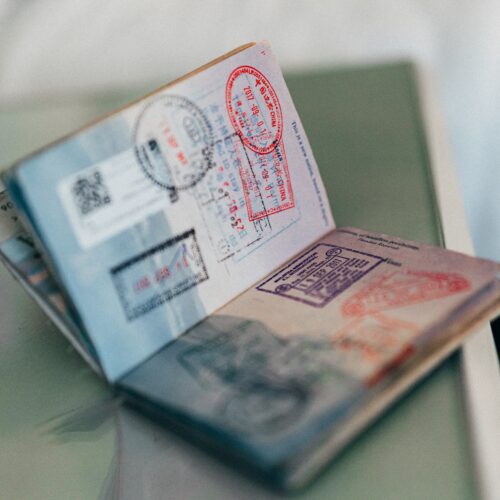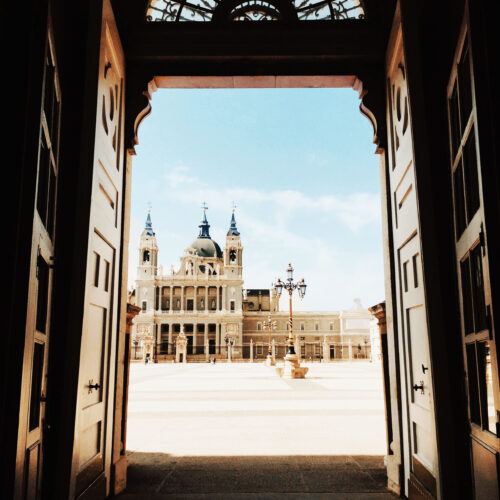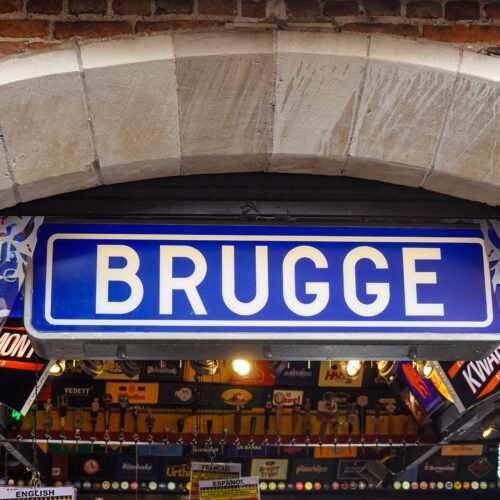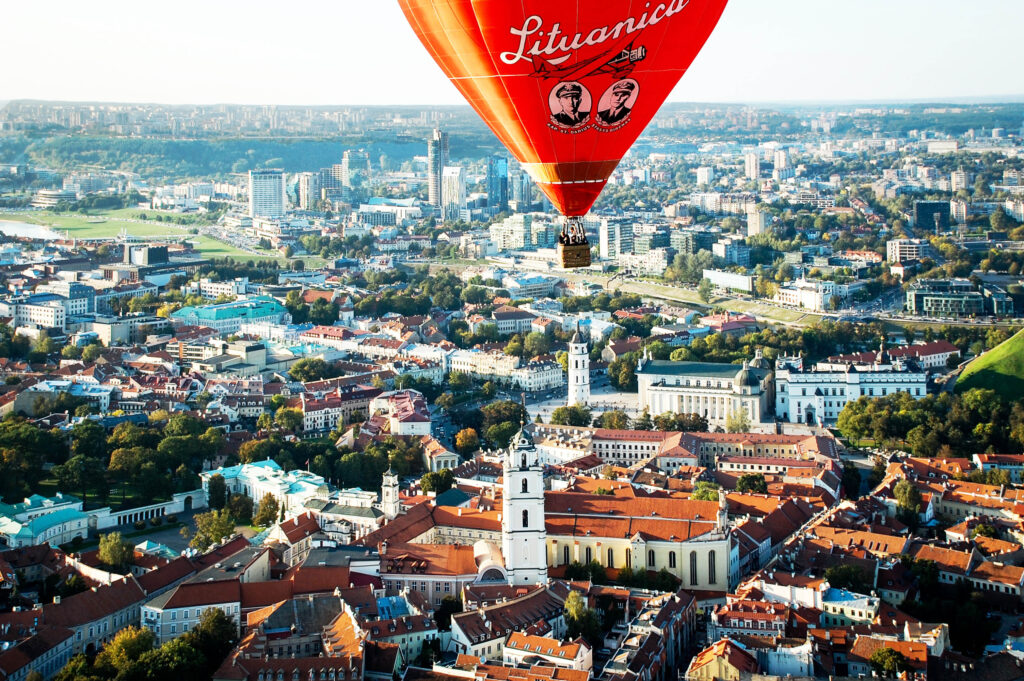
Get Ready to Roll Your ‘V’s and Expand Your Waistline in Vilnius and explore amazing adventures in this capital city of Lithuania
If you’re looking for a destination that’s equal parts charming and hard to spell, look no further than Vilnius. That’s right, Vilnius – it’s like someone tried to spell “villainous” but got distracted halfway through.
But don’t let the name fool you – Vilnius is a delightful city, with cobblestone streets, historic buildings, and more restaurants per capita than you can shake a stick at (although why you’d want to shake a stick at restaurants is beyond me).
So pack your bags, practice your Lithuanian tongue twisters, and prepare for a wild ride in Vilnius.
 Here are some things to see and do in Vilnius, Lithuania:
Here are some things to see and do in Vilnius, Lithuania:
- Vilnius Old Town: Stroll through the historical center of Vilnius and explore its narrow streets, charming buildings, and vibrant atmosphere.
- Gediminas Castle Tower: Visit the iconic castle tower, the only remaining part of the original castle, and take in the panoramic views of the city from the top.
- St. Anne’s Church: Admire the beautiful Gothic-style architecture of this historic church, which was built in the 15th century.
- Uzupis: Explore this unique neighborhood, which declared itself an independent republic in 1997, and discover its bohemian spirit, street art, and eclectic shops.

- Vilnius Cathedral: Visit the impressive Vilnius Cathedral, which has served as the spiritual heart of Lithuania for centuries, and admire its Baroque-style architecture and stunning interior.
- National Museum of Lithuania: Learn about the history and culture of Lithuania at this comprehensive museum, which features exhibits on everything from prehistoric times to the present day.
- Republic of Uzupis Constitution: Check out the Republic of Uzupis Constitution, a tongue-in-cheek document outlining this quirky neighborhood’s values and principles.
- Bernardine Garden: Take a break from the hustle and bustle of the city and relax in this peaceful park, which features beautiful gardens, fountains, and sculptures.
- Frank Zappa Statue: Pay tribute to the legendary musician and composer at this unique statue erected in his honor in 1995.
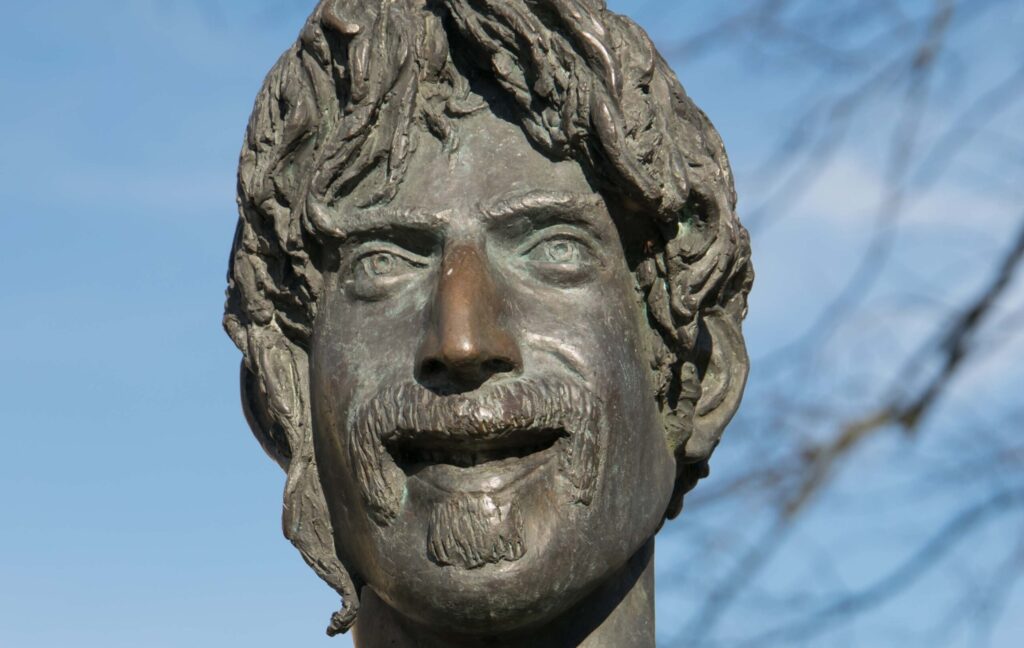
- Hot air balloon ride: Take a scenic hot air balloon ride over Vilnius or other parts of Lithuania and enjoy breathtaking views from above.
- Kayaking and canoeing: Explore Lithuania’s many rivers and lakes by kayak or canoe and discover hidden corners of the countryside.
- Hiking and trekking: Go hiking or trek through Lithuania’s beautiful forests, hills, and valleys and enjoy the natural scenery.
- Biking: Rent a bike and cycle through Lithuania’s picturesque countryside or explore the city on two wheels.
- Rock climbing: Test your skills and climb the natural rock formations in Aukstaitija National Park, which offers some of the best climbing spots in Lithuania.
- Zipline: Experience the thrill of ziplining through the forest canopy at Treetop Park in Anyksciai, where you can choose from various zipline routes.
- Paragliding: Soar over Lithuania’s stunning landscapes and enjoy breathtaking views from high up in the sky.
- ATV tours: Take an ATV tour through Lithuania’s forests and countryside and explore off-the-beaten-path trails and routes.
- Windsurfing and kitesurfing: Head to Lithuania’s Baltic coast and try your hand at windsurfing or kitesurfing, where you can ride the waves and catch some air.
- Snow sports: During the winter months, enjoy skiing, snowboarding, and other snow sports at Lithuania’s top ski resorts, such as Druskininkai Snow Arena or Snow Arena in Liepkalnis.
Did you know?
Vilnius is home to the world’s only museum dedicated to Lithuanian composer and painter Mikalojus Konstantinas Čiurlionis. The museum, located in the artist’s former home, features a collection of his artwork, musical scores, personal belongings, interactive exhibits, and educational programs. Čiurlionis is considered one of Lithuania’s most significant cultural icons and is known for his unique style that blends elements of Symbolism, Art Nouveau, and National Romanticism.
A little history:
In the 1300s, Vilnius is founded as a castle and trading post on the banks of the Neris River by Grand Duke Gediminas of Lithuania. The city quickly becomes an important center of commerce, culture, and political power.
By the 1400s Vilnius becomes a major cultural and religious center of the Polish-Lithuanian Commonwealth, with a thriving Jewish community and numerous churches, monasteries, and universities.
In the 1200s, the town was annexed by the Russian Empire as part of the partition of Poland. The city experienced a period of Russification, with many of its institutions and landmarks being renamed or destroyed.
 Vilnius becomes the capital of newly independent Lithuania following World War I from 1918-1940, but is annexed by the Soviet Union in 1940 under the Molotov-Ribbentrop Pact. During this period, many of the city’s cultural and religious institutions were suppressed or destroyed by Soviet authorities.
Vilnius becomes the capital of newly independent Lithuania following World War I from 1918-1940, but is annexed by the Soviet Union in 1940 under the Molotov-Ribbentrop Pact. During this period, many of the city’s cultural and religious institutions were suppressed or destroyed by Soviet authorities.
From 1941-1944, Vilnius is occupied by Nazi Germany during World War II, and the city’s Jewish population is targeted for extermination in the Holocaust. Tens of thousands of Jews are murdered at the Ponary massacre site just outside the city.
Then in 1944-1990, the town is reintegrated into the Soviet Union after World War II and experiences a period of Sovietization and suppression of Lithuanian culture and identity.
From 1990 until present, Lithuania regained its independence from the Soviet Union in 1990, and Vilnius became the capital of the newly independent nation. The city experienced rapid growth and modernization, with the restoration of many historic landmarks and the development of new cultural and economic institutions.
Now, Vilnius is a thriving center of art, culture, and innovation and is recognized as a UNESCO World Heritage site for its historic Old Town.
